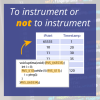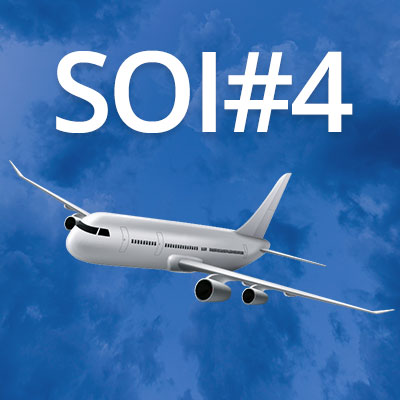The recent launch of the RapiCover DO-178B/C tool qualification pack is a good opportunity to set out some of the guiding principles behind its development and to illustrate the questions we asked ourselves to ensure we gave our customers the best possible solution to their needs.
Who wants a tool qualification pack?
If you intend to use RapiCover in your project for the generation of test coverage data to meet DO-178B/C objectives, and you are an applicant seeking certification for your project, then you need to consider qualification of RapiCover for use on that project.
What will customers do with the tool qualification pack?
The applicant liaises with the certification authority during the qualification process for two main reasons: First, to explain how the tool is used: specifically, what activities are being replaced by use of the tool.
"I'm using RapiCover to determine statement and decision coverage"
Second, to explain why the tool is trustworthy. Trust breaks down into verification of the tool requirements and configuration control of the tool delivery.
"I can trust RapiCover because the tool meets its requirements and I have the right version of the tool"
What does the qualification pack include?
The qualification pack is a set of applicant-editable documents according to the qualification approach chosen. The basic tool qualification data to support all qualification approaches includes:
- A tool qualification plan document (TQP) with placeholders for the applicant to customise. This is important for a COTS tool as it sets out the different responsibilities of the applicant and the tool vendor.
- A tool qualification accomplishment summary document (TAS), again with placeholders. A key part of this document for us is the explanation of deviations from the planned qualification activities, which we can track through the problem reporting system.
- The tool operational requirements document (TOR). For RapiCover testing, we include the integration with the target test hardware in the scope of the requirements, so that they cover the whole process of running tests and obtaining coverage data from the target.
- The developer version of the tool verification results (TVR) showing that the tool meets its TOR. We test using a flexible integration system that mimics the behavior of a range of standard integration approaches.
- Access to software lifecycle plans and configuration control data.
Our standard qualification kit includes all of the qualification data, but it also includes facilities for operational verification of the complete applicant integration of RapiCover:
- Our tool verification kit (TVK) for RapiCover. This is our suite of tests that exercise RapiCover and determine its compliance with the TOR.
- Our test case, procedure and results format documentation (TCPR). This explains the use of TVK, including customisation for a particular applicant integration.
- The TVK customisation report. We provide placeholders here so that the results of following the customisation procedure may be documented appropriately.
Our qualification service includes everything from the qualification kit, plus full examination of the use of RapiCover within a specific integration by one of our qualification engineers. During this integration visit, we provide target-specific customisation of TVK, workflow analysis and production of TVR data on-site. From this, we generate:
- A qualification integration report, which documents the analysis of the RapiCover workflow. This includes analysis of justified deviations from recommended workflow and conditions of use.
- A complete TVK configuration report. This documents the customization of TVK for the specific applicant integration by the qualification engineer.
- A complete set of tool verification results for the applicant system. This is the evidence showing that, in addition to correctly operating with generic integrations, the tool also operates correctly with the specific applicant integration.
For more details, download our DO-178B/C and ISO 26262 tool qualification Product Briefs.

 Rapita System Announces New Distribution Partnership with COONTEC
Rapita System Announces New Distribution Partnership with COONTEC
 Rapita partners with Asterios Technologies to deliver solutions in multicore certification
Rapita partners with Asterios Technologies to deliver solutions in multicore certification
 SAIF Autonomy to use RVS to verify their groundbreaking AI platform
SAIF Autonomy to use RVS to verify their groundbreaking AI platform
 What does AMACC Rev B mean for multicore certification?
What does AMACC Rev B mean for multicore certification?
 How emulation can reduce avionics verification costs: Sim68020
How emulation can reduce avionics verification costs: Sim68020
 Multicore timing analysis: to instrument or not to instrument
Multicore timing analysis: to instrument or not to instrument
 How to certify multicore processors - what is everyone asking?
How to certify multicore processors - what is everyone asking?
 Certifying Unmanned Aircraft Systems
Certifying Unmanned Aircraft Systems
 DO-278A Guidance: Introduction to RTCA DO-278 approval
DO-278A Guidance: Introduction to RTCA DO-278 approval
 ISO 26262
ISO 26262
 Data Coupling & Control Coupling
Data Coupling & Control Coupling
 DASC 2025
DASC 2025
 DO-178C Multicore In-person Training (Fort Worth, TX)
DO-178C Multicore In-person Training (Fort Worth, TX)
 DO-178C Multicore In-person Training (Toulouse)
DO-178C Multicore In-person Training (Toulouse)
 HISC 2025
HISC 2025



















